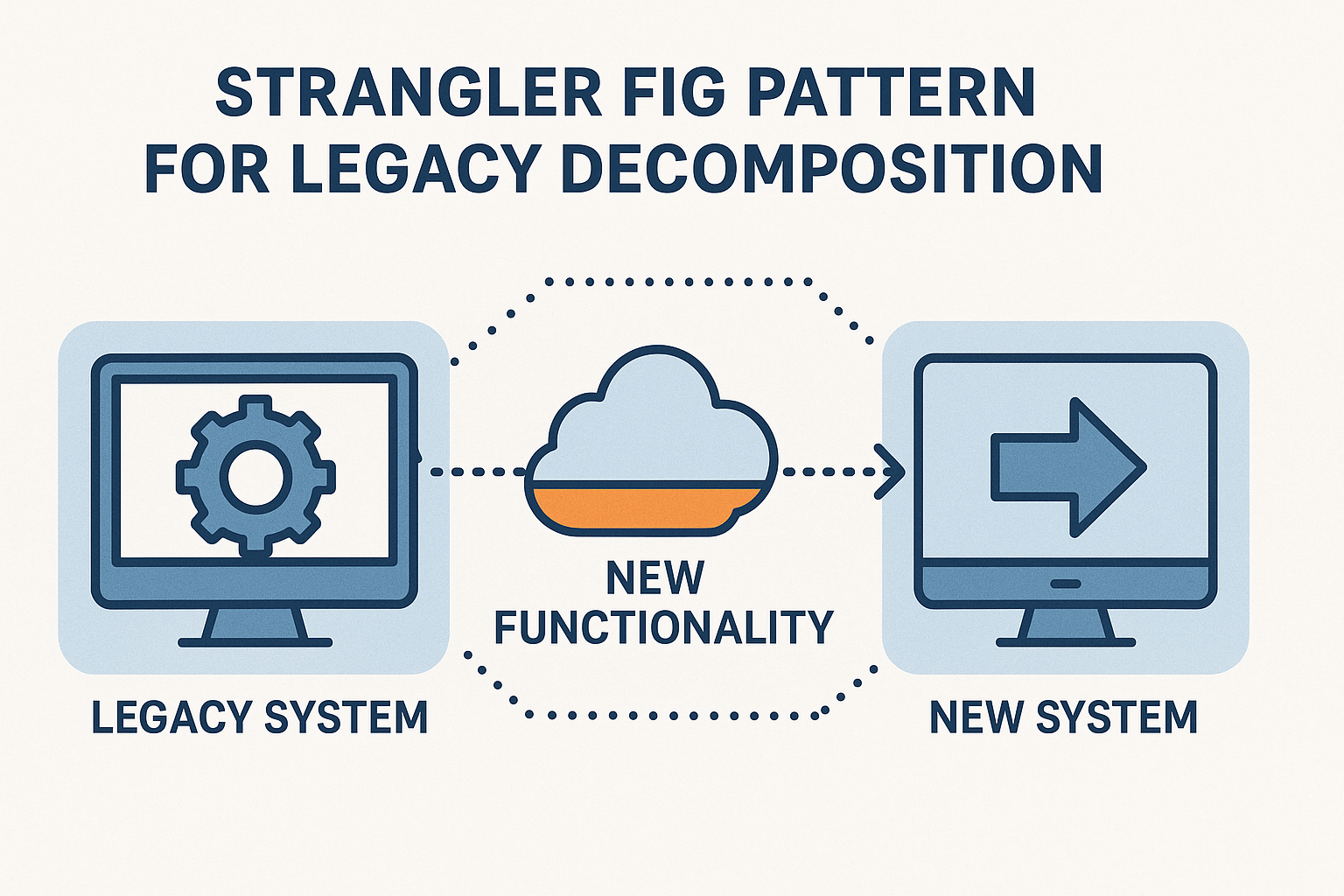Have you ever stared at a sprawling legacy codebase and felt like you’re trying to renovate a skyscraper from the inside—one floor at a time—without collapsing the entire building? Welcome to the world of legacy decomposition, where the Strangler Fig Pattern swoops in like a benevolent arborist. Just as the strangler fig vine grows around an old host tree, gradually taking over its structure before the host eventually decays, this pattern helps you incrementally replace parts of your monolith with new microservices—no all-or-nothing rewrites required.
Understanding the Strangler Fig Pattern
At its essence, the Strangler Fig Pattern is about incremental replacement. Rather than ripping out your entire monolith in a big-bang rewrite (and praying it works), you:
Identify a small slice of functionality in the monolith—say, user notifications or order
Build a new service that implements that slice in your modern
Redirect traffic for that slice from the monolith to your new
Repeat until the monolith is reduced to a skeleton—or even retired entirely.
This approach offers a safety net: if your new service misbehaves, you can always route requests back to the old code. It’s a low-stress, high-confidence way to modernize one piece at a time.
A Step-By-Step Walkthrough
Step 1: Map the Monolith’s Functionality
Draw a clear diagram of your application’s domains and their interdependencies. In my last gig, we sketched a big bubble chart on a whiteboard: “User Auth,” “Profile Management,” “Reporting,” “Payment Processing,” and so on—each with arrows showing data flow. This mapping revealed that our “Email Notifications” module was relatively isolated, making it the perfect candidate for the first strangler slice.
Step 2: Stand Up the New Service
Choose your tech stack—perhaps Node.js for rapid iteration, or Go for performance—and scaffold a minimal service that implements just the email-sending endpoints. Give it its own database or storage, if needed, so it remains autonomous. During our migration, we spun up a tiny Notification API with Express, wired in Mailgun, and had it fully functional in under a day.
Step 3: Introduce a Routing Layer
You need a facade—an API gateway, service mesh, or even a custom router within your monolith—that can inspect incoming requests and decide whether to send them to the monolith or the new service. We added a simple proxy in our API gateway: any POST/users/{id}/notify call would go to the new Notification API, while everything else continued to flow through the legacy app.
Step 4: Duplicate and Synchronize Data (If Needed)
If your new service requires the same data as the monolith (e.g., user email addresses), you have two options:
On-Read Sync: Fetch data on demand from the monolith’s Quick to implement, but introduces runtime latency and coupling.
Event-Driven Sync: Subscribe to domain events—“UserCreated,” “UserUpdated”— from the monolith via a message bus, and maintain a local store. This adds upfront complexity but decouples the services and ensures fast reads.
In our case, we tapped into our existing Kafka bus: every time the monolith emitted a user.updated event, our Notification API updated its own user-store. That meant our new service never had to call back to the monolith at runtime.
Step 5: Monitor, Test, and Switch Traffic
Start with canary routing—send a small percentage of notification requests to the new service and compare outcomes (response times, error rates) against the monolith. We ran 5% of our email traffic through the new API for 24 hours. Once metrics looked stable—no bounce in failures or latency—we flipped the switch to 100%.
Step 6: Retire the Legacy Code
After you’ve fully routed traffic away, remove the old notification module from the monolith. This cleanup not only slims down your monolith but also alleviates maintenance burden. Celebrate with your team—perhaps over a round of digital high-fives or, if you’re in the office, real ones.
Overcoming Common Challenges
Complex Interdependencies: Some modules aren’t so isolated. Breaking out “Order Processing” might require refactoring several related components Tackle these by grouping tightly coupled features into a single strangler slice.
Data Consistency: Synchronous reads from the monolith can cause timeouts or Event-driven sync is more robust but demands solid retry and dead-letter strategies to handle missed events.
Routing Mistakes: Forgetting to update all routes can send some requests back to the monolith by Mitigate by writing end-to-end tests against your gateway’s routing logic.
Operational Overhead: Each new service adds deployment, monitoring, and alerting configurations. Automate deployment via CI/CD and ensure every service has standardized logging and metrics out of the box.
Conclusion
The Strangler Fig Pattern is your blueprint for a measured, stress-free transformation from monolith to microservices. By carefully choosing bounded slices, standing up new services, and incrementally redirecting traffic, you gain confidence at every step—and avoid the “big rewrite” nightmare. Ready to start strangling? Grab a marker, outline your first slice, and let that fig vine of modernization begin!





